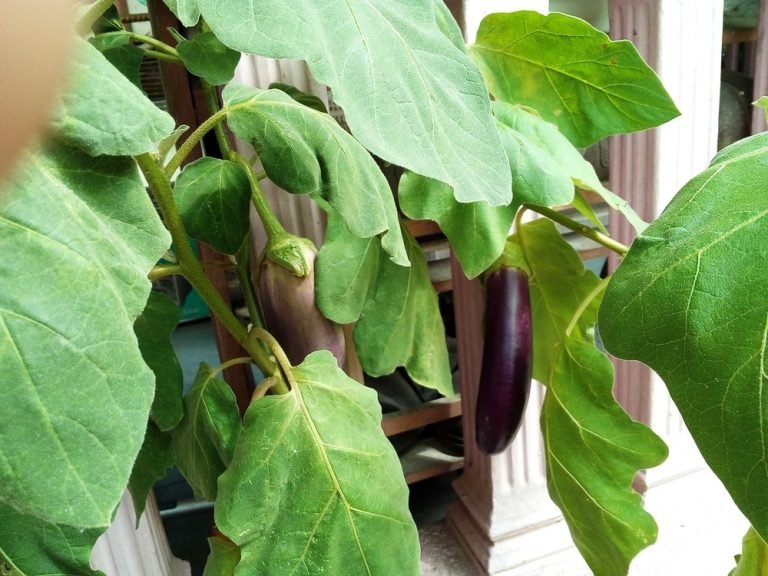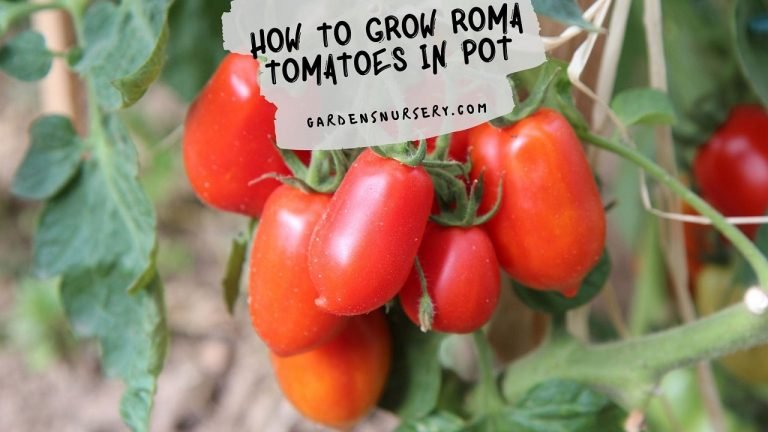how to grow potatoes in a pot – [Beginners Guide]
Hey there! Are you looking to add some fresh potatoes to your home-grown vegetable collection? Well, you’re in luck because growing potatoes in pots is a great way to do just that!
Not only is it a space-saving option for those with limited outdoor space, but it’s also a fun and easy way to get started with gardening. Plus, growing your own potatoes at home means you’ll have access to fresh, organic produce all season long.
In fact, one potato plant can yield up to 10 pounds of potatoes! That’s a lot of potatoes for just one little plant. And the best part? You can grow them right on your balcony or patio.
I personally have grown potatoes in pots in my own home and it was a rewarding experience. It’s a great feeling to be able to walk out to your balcony or patio and pick a fresh potato for dinner. And, I love the fact that I know exactly where my food came from and that it’s free of pesticides.
So, are you ready to give it a try? Keep reading for all the tips and tricks you’ll need to successfully grow potatoes in a pot.
Pot or container selection
When it comes to growing potatoes in a pot, the size and construction of the pot is important for optimal growth.
Firstly, the pot should be at least 12 inches deep and 12 inches wide. This will provide enough space for the potatoes to grow and develop properly. It is also important to note that the bigger the pot, the more potatoes you can grow.
Secondly, the pot construction is also important. A plastic or ceramic pot works well as they both retain moisture well and the plastic is lightweight to move around. Avoid using metal pots as they can get too hot in the sun, which can damage the roots of the potatoes.
Lastly, it’s important to make sure that the pot you choose has drainage holes at the bottom. This will allow excess water to drain away and will prevent the potatoes from rotting.
In summary, when choosing a pot to grow potatoes in, look for a pot that is at least 12 inches deep and 12 inches wide, made of plastic or ceramic and has drainage holes at the bottom. These characteristics will give your potatoes the best chance for optimal growth.
Make suitable soil mix
When it comes to growing potatoes at home, the type and mixture of soil is crucial for optimal growth.
Potatoes prefer well-draining, loose soil that is high in organic matter. A good soil mix for potatoes would consist of equal parts of garden soil, peat moss, and coarse sand or perlite.
It is also important to make sure that the soil has a pH between 4.5 and 7. Potatoes grow best in slightly acidic soil, so if your soil has a higher pH, you may want to add sulfur or other pH-lowering amendments to the soil to bring it to the correct range.
It is also essential to ensure that the soil is fertile and rich in nutrients, especially nitrogen, phosphorus, and potassium. You can add compost or well-rotted manure to the soil to ensure that the potatoes have enough nutrients to grow and develop properly.
In summary, to grow potatoes at home, you should use a soil mix that is well-draining, loose and high in organic matter with a pH between 4.5 and 7, and rich in nutrients especially nitrogen, phosphorus, and potassium. This type of soil mixture will give your potatoes the best chance for optimal growth.
How to plant the potatoes?
Growing potatoes in a pot at home is a fun and easy way to enjoy fresh, organic potatoes all season long. Here is a step-by-step guide on how to plant potatoes in a pot at home:
Step 1: Choose a pot
Choose a pot that is at least 12 inches deep and 12 inches wide. It should be made of plastic or ceramic and have drainage holes at the bottom. Avoid using metal pots as they can get too hot in the sun, which can damage the roots of the potatoes.
Step 2: Prepare the soil
Fill the pot with a soil mix that is well-draining, loose and high in organic matter, with a pH between 4.5 and 7, and rich in nutrients especially nitrogen, phosphorus, and potassium.
Step 3: Plant the potatoes
- Cut seed potatoes into pieces, each with at least one “eye” or small bud, and let them dry for a day or two before planting.
- Place the seed potatoes on top of the soil, about 4 inches deep and 12 inches apart.
- Cover the potatoes with 2 inches of soil, and water well.
Step 4: Care for the potatoes
- Keep the soil consistently moist but not waterlogged.
- Fertilize the potatoes every 4-6 weeks with a balanced fertilizer or compost tea.
- As the plant grows, add more soil to the pot, covering the lower leaves, leaving only the top leaves exposed. This is called “hilling” and helps the potatoes develop more tubers.
Step 5: Harvest the potatoes
Potatoes are ready to harvest when the leaves of the plant begin to turn yellow and die back. Carefully dig up the pot and harvest the potatoes.
By following these steps, you will be able to successfully grow potatoes in a pot at home and enjoy fresh, organic potatoes all season long. Happy gardening!
How to care for potatoes?
Watering Requirement
Potatoes need to be kept consistently moist but not waterlogged. The soil should be kept moist but not overly wet. It is important to not let the soil dry out completely, as this can cause the potatoes to become stunted or even die. You can check the moisture level of the soil by sticking your finger into the soil. If the soil feels dry, it’s time to water.
Fertilizer Requirement
Potatoes benefit from regular fertilization. You can use a balanced fertilizer or compost tea, and apply it every 4-6 weeks. Be sure to follow the instructions on the fertilizer package for proper application.
Sunlight Needs
Potatoes need at least 6 hours of direct sunlight per day. It is important to place the pot in an area that receives full sun. If you don’t have a spot that gets full sun, you can supplement with grow lights.
Pruning & Training
As the potato plant grows, you should add more soil to the pot, covering the lower leaves, leaving only the top leaves exposed. This is called “hilling” and helps the potatoes develop more tubers. This should be done every 2-3 weeks, or as needed.
Other Care
Potatoes are generally easy to grow and maintain, but it’s important to keep an eye out for pests and diseases. Common potato pests include aphids and Colorado potato beetles. You can control these pests by handpicking them off the plant or using an insecticidal soap. Be sure to keep an eye on the plant’s leaves and stem, as they may be the first indication of a pest problem.
It’s also important to rotate your potato crop each year. This will help reduce the risk of disease and pests, and will also ensure that the soil remains fertile and healthy.
By providing the proper care, you will be able to grow healthy and productive potato plants in your home. With a little bit of patience and attention, you’ll be able to enjoy fresh, organic potatoes all season long.
Common problems
Pests
Potatoes grown in pots can be susceptible to pests such as aphids, Colorado potato beetles, and cutworms. These pests can feed on the leaves and stems of the potato plants, causing damage and reducing yield.
Insects
Insects such as wireworms, white grubs and armyworms can cause damage to the potatoes underground by feeding on the tubers. This can lead to poor production and small, malformed potatoes.
Diseases
Potato plants grown in pots are also vulnerable to a variety of diseases, including:
- Early Blight
- Late Blight
- Verticillium Wilt
- Fusarium Dry Rot
These diseases can cause leaf discoloration, wilting, and even death of the plant. They can also cause the tubers to rot or become unmarketable.
Poor Production
Poor production can occur due to a variety of factors, including:
- Inadequate sunlight
- Overcrowding of plants in the pot
- Inadequate water or nutrients
- Poor soil quality
Addressing these issues and providing optimal growing conditions can help improve potato production in pots.
In summary, Potatoes grown in pots can face a range of issues such as pests, insects, diseases, poor production and other issues which can be addressed by providing optimal growing conditions and regular monitoring.
Harvesting & storing homegrown potatoes
When to harvest
Homegrown potatoes are typically ready for harvest when the plant’s foliage begins to yellow and die back. This usually occurs about 2-3 weeks after the foliage has fully matured. To check if your potatoes are ready for harvest, gently dig around the base of the plant with a garden fork or trowel. If the tubers are a decent size and the skin is firm, they are ready to be harvested.
How to harvest
When harvesting potatoes, it’s important to handle them carefully to avoid bruising or cutting the skin. Follow these steps:
- Carefully dig around the base of the plant with a garden fork or trowel, being careful not to damage the tubers.
- Lift the plant out of the soil and shake off any excess dirt.
- Remove any remaining dirt from the tubers using a soft brush.
- Lay the tubers out in a cool, dry place for a few days to allow the skin to harden before storing.
Storing
- After the skin has hardened, store the potatoes in a cool, dark, and well-ventilated place, such as a root cellar or cool basement.
- Avoid storing potatoes in plastic bags or containers, as they need to breathe to prevent rot.
- Check the potatoes regularly for any signs of rot or spoilage and remove any affected tubers immediately.
In summary, Homegrown potatoes are ready for harvest when the plant’s foliage begins to yellow and die back, it is important to handle the potatoes carefully and store them in a cool, dark, and well-ventilated place such as a root cellar or cool basement for optimal storage.
Growing potatoes in container – Conclusion
Conclusion
Growing potatoes in a pot can be a fun and rewarding way to produce a homegrown vegetable. By following the steps outlined in this guide, you can successfully grow healthy and productive potato plants in a pot. Some key takeaways to remember when growing potatoes in a pot include:
- Choosing a suitable container and soil
- Providing the plants with adequate sunlight, water, and nutrients
- Monitoring the plants regularly for pests, insects, and diseases
- Harvesting and storing the potatoes properly
It is essential to remember that growing potatoes in a pot will require regular monitoring and maintenance, but the end result is well worth the effort. With a little patience and care, you can enjoy the taste and satisfaction of homegrown potatoes.
In conclusion, growing potatoes in a pot is an exciting and rewarding experience. We encourage you to try implementing the information provided in this guide to grow your own potatoes at home, you will be able to enjoy a great homegrown vegetable.








